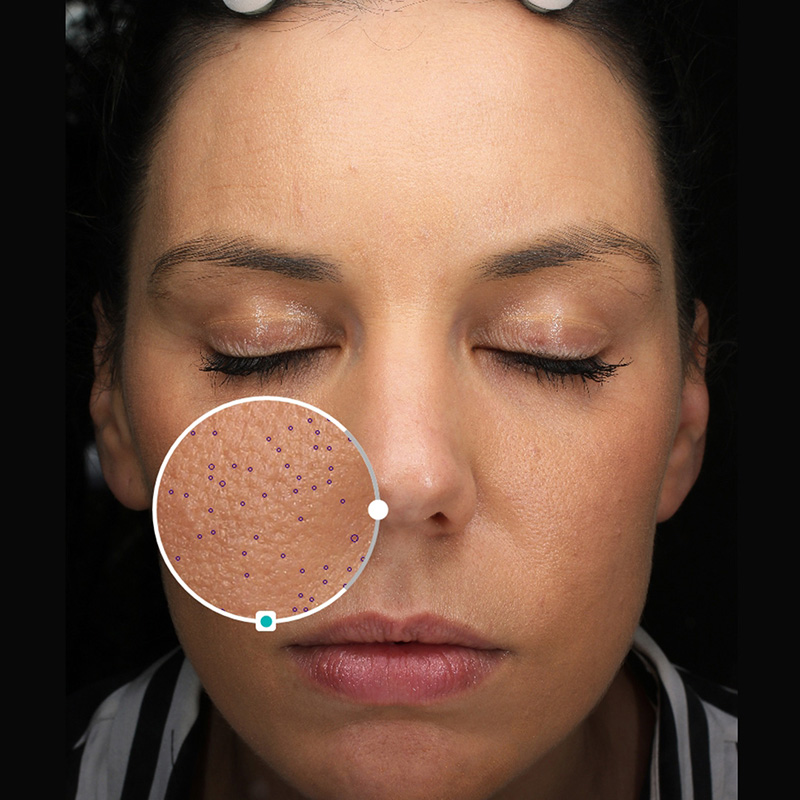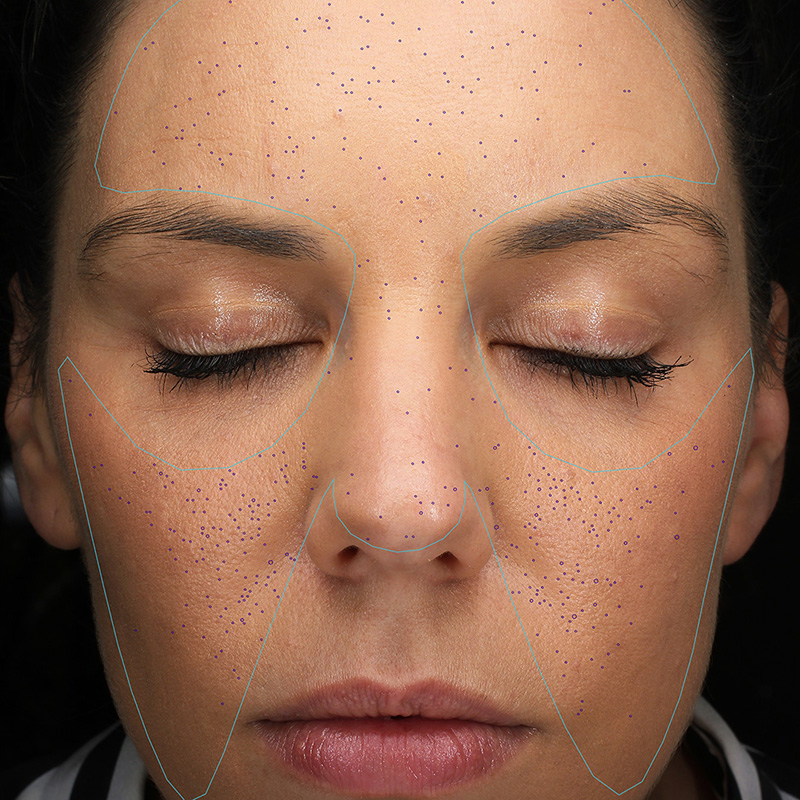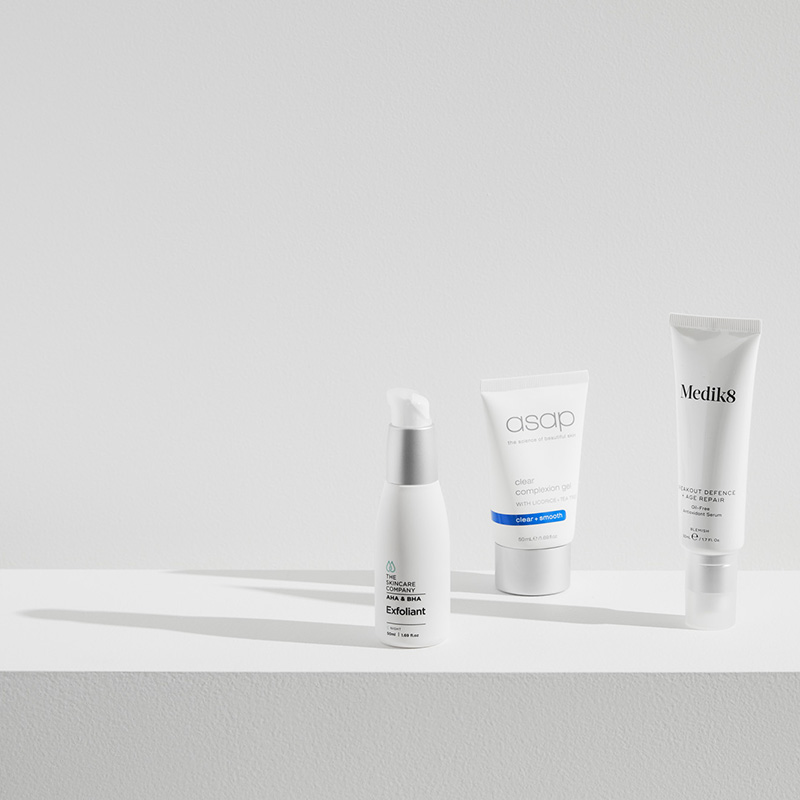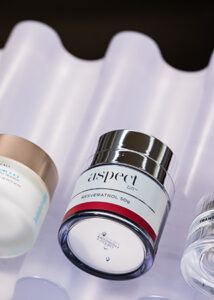The Princess and the Pore-per
Published on: 24th June, 2019
By: Assoc Professor Greg Goodman
Categories: Acne, Combination, Obvious pores, Oily Skin
It’s quite common for us to openly celebrate other elements of our skin. Perhaps it’s our youthful freckles, our make-up-less glow, or our warm skin tone!
But pores tend to be the bane of every…Single. Life. Yes, probably even yours.
Pores being measured on the VISIA® Complexion Analysis System at the South Yarra Script Skincare store.
Here’s why:
Pores come to life in adolescence when they increase due to hormonal changes. They can enlarge and become blindingly obvious – often at the same time violently hated. This might be because their increase in size often goes hand-in-hand with an increase in oil production and acne. Once they get ‘bigger’ they can feel like they accumulate grime and dirt, leaving us with an unclean feeling and an element of self-consciousness.
Or perhaps it’s because they interrupt the appearance of smooth skin by causing light reflection to break up as it bounces off these inconvenient little pot-holes.
Sadly, according to our founder Assoc. Prof. Greg Goodman, ‘the porous’ among us also don’t necessarily age better. That old myth about oil being the fountain of youth that keeps wrinkles at bay…is just that, a myth. “The oil that excretes from our pores isn’t the right kind of oil (of course not) and therefore doesn’t keep our skin supple and elastic.”
Pores being measured on the VISIA® Complexion Analysis System at the South Yarra Script Skincare store.
Helping the pore.
When treating pore problems, our first Script Tip is don’t accidentally clog them.
Unfortunately even one product, with a single pore-clogging ingredient will cause problems for some, so be careful about your base as this is where problems often arise. As a general rule serums and gels tend to be better than creams or lotions. Pore clogging ingredients are termed ‘comedogenic’. When companies produce products that treat pores, they should exclude these ingredients, which are often found in rich creams.
As a general rule, skincare for oily skin should be good for those prone to clogged pores. Look for statements like: ‘non-comedogenic’, ‘non-pore clogging’, ‘non-acnegenic’, ‘non-acne forming’ or ‘oil free’.
Active skincare for pores may include vitamin A, which has different forms and names such as Retinol, Retin A or Retinaldehyde (a whole Script Story on its own, click: here to read it). High strength vitamin A is excellent at clearing pores and is actually termed ‘comedolytic’. This means it has the ability to burrow down and break up comedones which are the mini blockages preceding pimples.
Beta hydroxy acid (salicylic acid) is a relative of aspirin, and has been used for around 150 years by Dermatologists. It has become a fashionable and effective “new’ product often marketed under the title BHAs. BHAs can burrow deep into the oils of the sebaceous glands and work away at the side walls of the pores dislodging cells and debris, generally clearing the pore.
Some of the products designed to treat pores available from the Script Skincare curated range.
Unfortunately neither of the above ingredients are recommended during pregnancy, so our go to for those with a baby on board is vitamin B3 AKA niacinamide. B3 has a lot of benefits for the skin, one of which is its ability to regulate oil. By regulating oil we avoid that shiny and unclean feeling as well as dirt becoming trapped in our pores.
Perfecting pores isn’t just the job of skincare, there are many treatments that are successful at reducing pores. Our experienced team can chat you through the most appropriate for you, which may include: Skinpen, Hydrafacial and the Iris laser.
So the happy end to this fairytale is, there really is no need to feel pore-ly.
To book in for a free Script Skincare consultation that includes having your pore’s (and other skin concerns) measured on the Visia® Complexion Analysis System.
Email: southyarra@scriptskincare.com
Phone: 1300 108 109
To get curated content directly in your inbox subscribe below.




